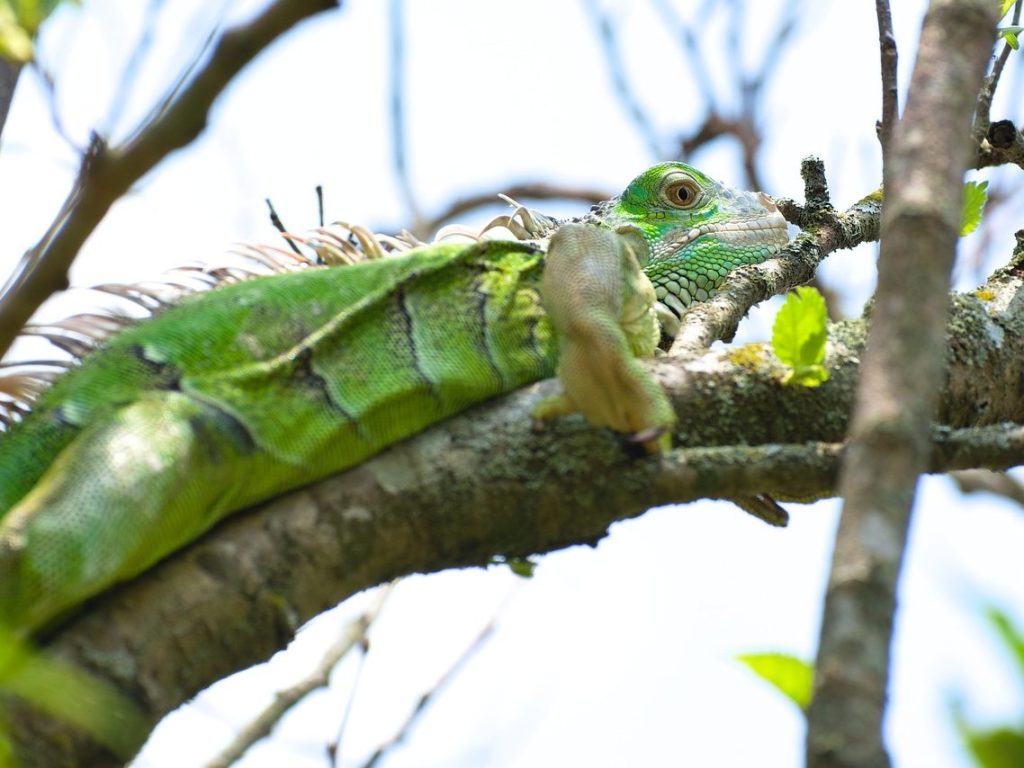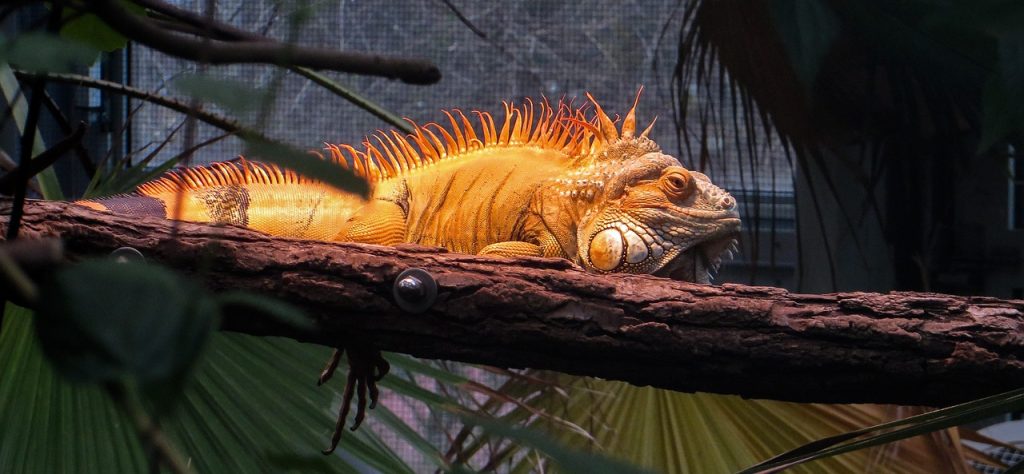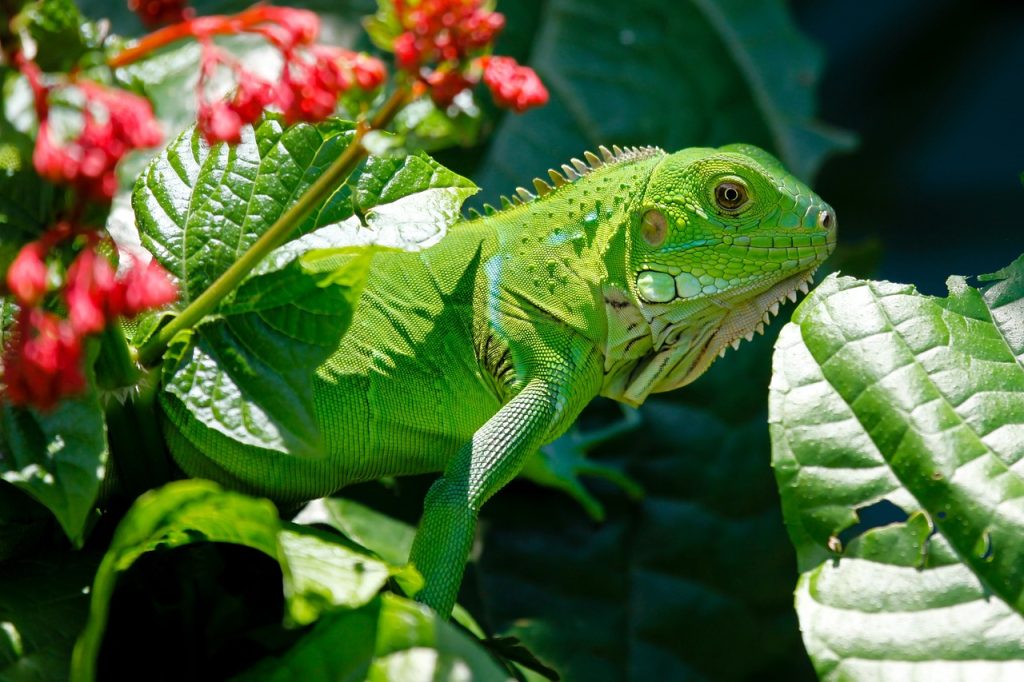diet
Green Iguanas are primarily herbivores, meaning their diet mainly consists of plant-based foods, including leaves, fruits, and vegetables. They commonly feed on the leaves of shrubs and trees, as well as fruits such as berries, bananas, and mangoes. While their diet is mostly plant material, they may occasionally eat small insects or eggs, though this is rare and not a significant part of their dietary habits. These occasional protein sources do not usually influence their overall herbivorous diet.

habitat preferences
Green Iguanas generally prefer habitats that offer warmth, abundant vegetation, and easy access to water. They are commonly found in tropical and subtropical environments with warm, humid climates, which suit their cold-blooded nature. They thrive where trees and shrubs provide shelter and food. Coastal areas, particularly near beaches, are also favorable, as they offer basking opportunities and vegetation. In urban environments, Green Iguanas adapt well to parks, gardens, and backyards. Additionally, they are often found near rivers, streams, or canals, where they can drink and occasionally swim. These habitats provide plenty of climbing opportunities for resting, foraging, and seeking protection from predators as well as opportunities to lay eggs.

reproductive behavior
During the breeding season, typically from late fall to early spring, female iguanas mature and begin the process of egg production. Females will search for a suitable nesting site, often in sandy or loose soil areas, where they can dig a burrow to lay their eggs. Green Iguanas are oviparous, meaning they lay eggs rather than give birth to live young. A female can lay between 20 and 70 eggs in a single clutch, depending on her size and health. After laying the eggs, the female covers the burrow to protect them from predators, leaving the eggs to incubate in the warm soil. The eggs hatch after approximately 60 to 90 days, with the hatchlings emerging fully formed.

